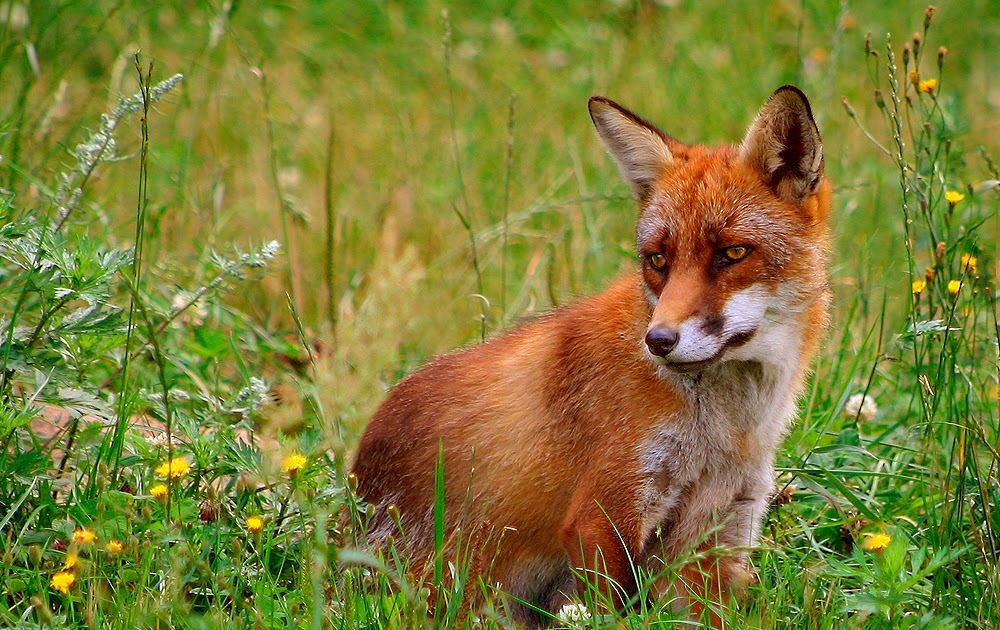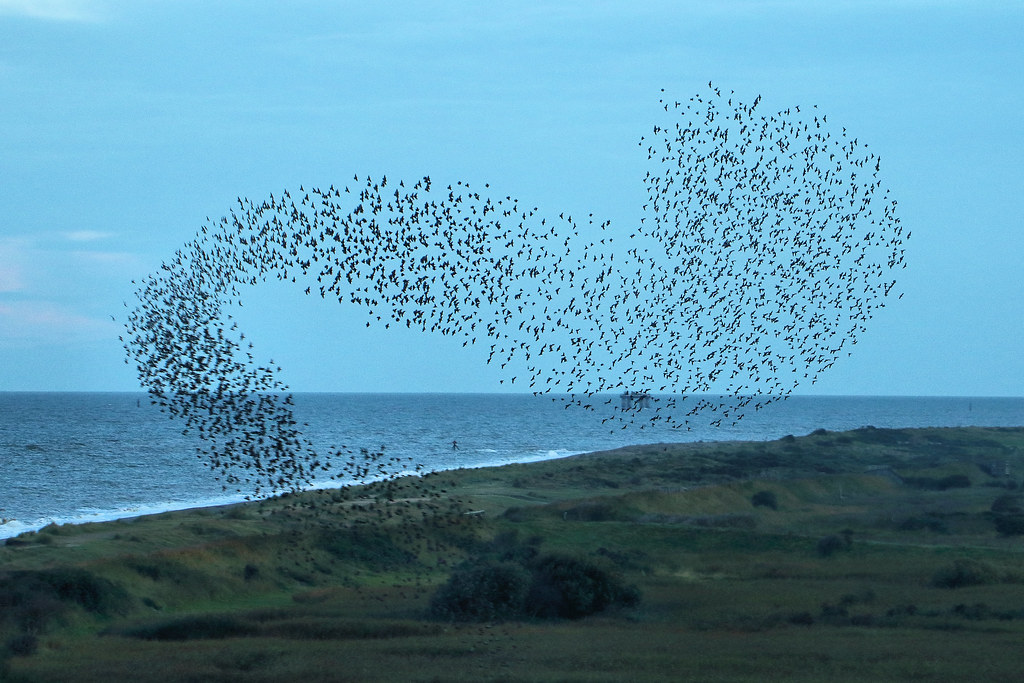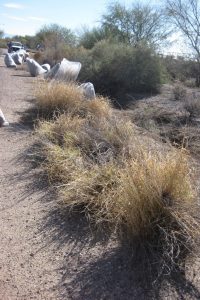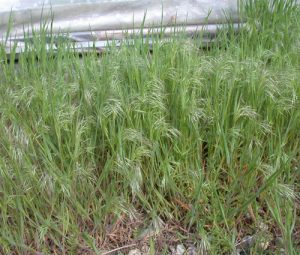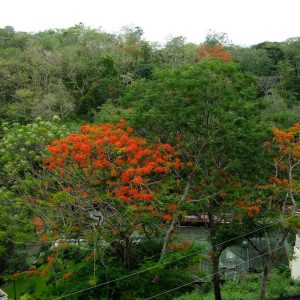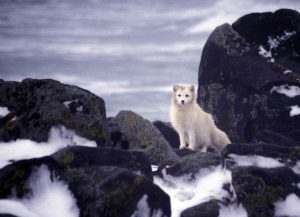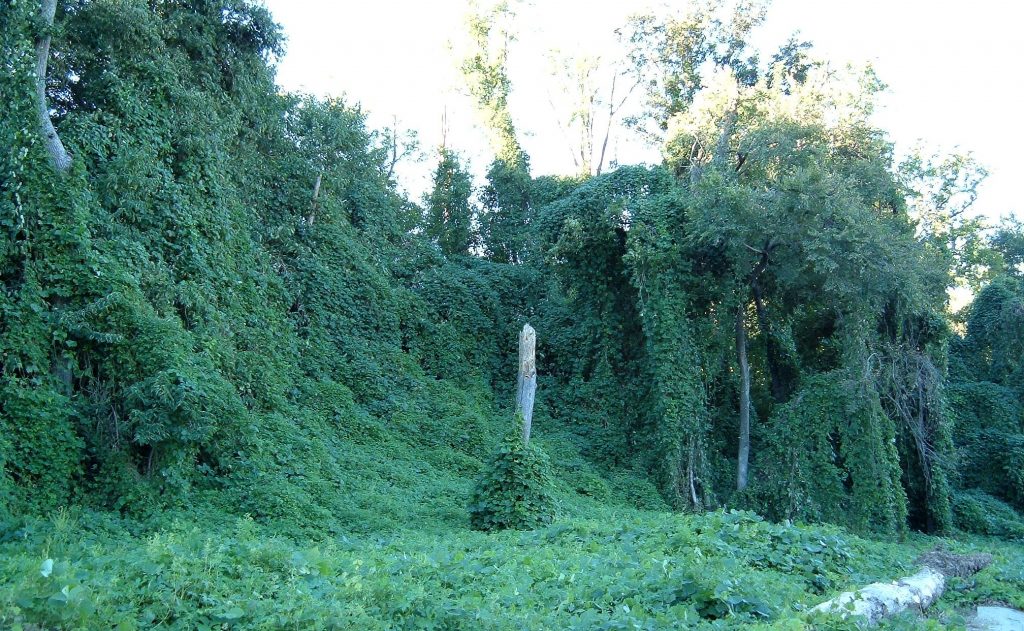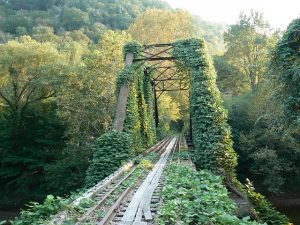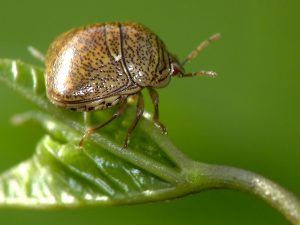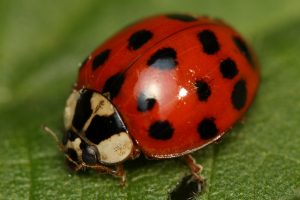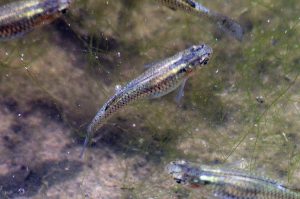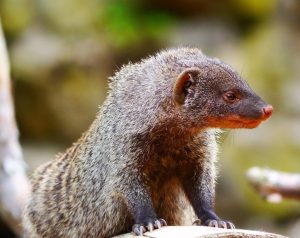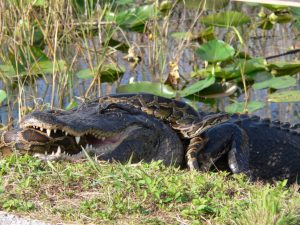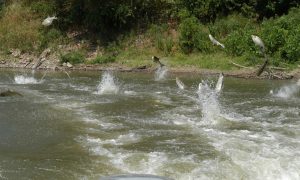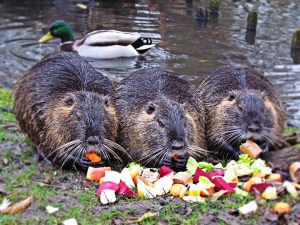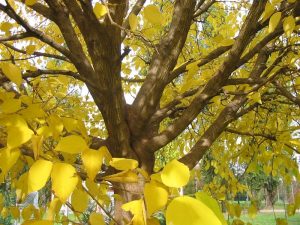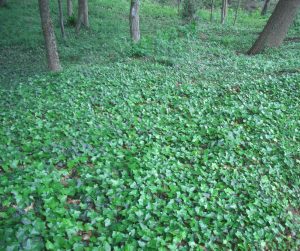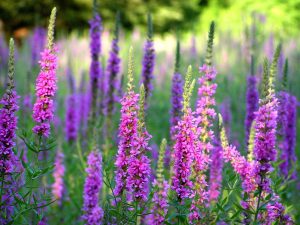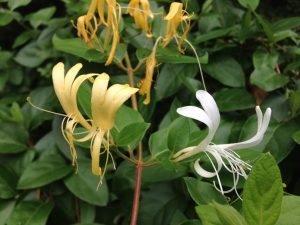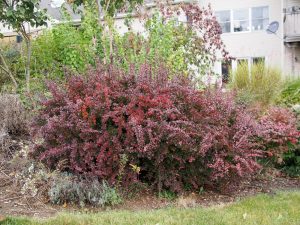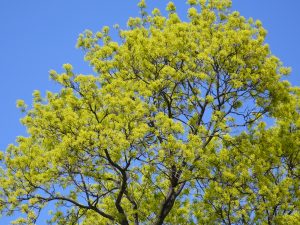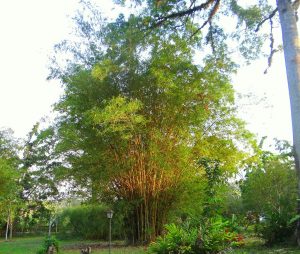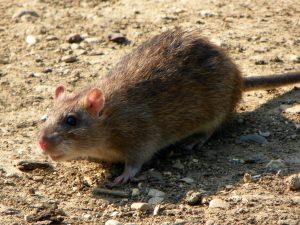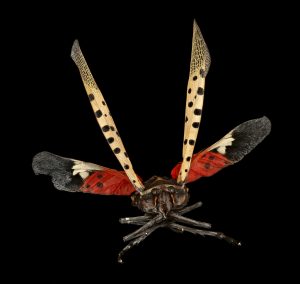I’m not talking people. One of my distant, distant ancestors, George Soule, was part of the first wave of immigrants arriving on the Mayflower. (Personal aside: I find it ironic that my descent from George Soule is through my half-Native American great-grandmother.)
No, this blog isn’t about people who’ve come here, or who might come here in the future. But beware the plant and animal come heres!
The National Park Service defines an invasive species as a non-native species that causes harm to the environment, economy, or human, animal, or plant health (Executive Order 13751, Dec 3, 2020). Invasive species are one of the leading causes of global biodiversity loss. They can damage native habitats, spread diseases, cause extinctions, and leave massive cleanup bills in their wake.
The Best of Intentions
I recently wrote a blog about starlings, introduced to Central Park, NYC. One story is that Shakespeare lovers brought them to North America to benefit homesick European immigrants. Another is that an avid gardener imported starlings to eat a particular caterpillar invading his garden. Regardless of intentions, estimates of the devastation caused by starlings to crops and livestock range from $800 million and $1.6 billion per year.
Starlings are one example of a species brought to a new area on purpose. People and businesses that import these species often do not anticipate the consequences.
Buffelgrass, a hearty, drought-tolerant grass, originally comes from eastern Asia, southern Europe, and most of Africa. Ranchers introduced buffelgrass in Arizona in the 1930’s as livestock forage. Later, soil conservationists planted it for erosion control and soil stabilization. It has spread rapidly across the desert Southwest since the 1980s. Today, however, its rapid spread has converted fire-resistant desert into flammable grassland, threatening saguaro cacti and other indigenous species. Buffelgrass fires can reach 1600F and spread between 3 and 9 mph, depending on wind speeds.
A similar example is cheatgrass, or downy brome, a Eurasian native that now infests vast reaches of sagebrush steppe in the Intermountain West (including wilderness acreage). Cheatgrass ignites at a lower temperature, promoting hotter and more frequent fires that can reduce or eliminate native sagebrush and negatively impact shrub-steppe species, such as the greater sage grouse.
The Portuguese introduced the faya tree (also called the faya bush or fire tree), native to the Azores and the Canary Islands, to Hawaii for both practical and ornamental reason. This aggressively invasive exotic now displaces native forest trees in the Hawaii Volcanoes Wilderness and elsewhere on the Big Island. In addition to competing with native species for habitat, faya trees add significant amounts of nitrogen to soil, which has the double impact of making it impossible for native species to grow and encouraging other invasive species in the area.
Although Arctic foxes are native to Alaska’s mainland, fur farmers introduced Arctic foxes on more than 450 Alaskan islands between 1750 and 1950. There, they threaten native seabirds by stealing eggs. (Ironically, human misbehavior may now be having the opposite effect in Norway, where littering motorists are attracting red foxes, which displace the formerly invasive Arctic foxes!)
Kudzu
Kudzu, or Japanese or Chinese arrowroot, has grown so ubiquitous that it has become a symbol of Southern American cultural identity.
The US Soil Conservation Service introduced kudzu, a climbing perennial vine native to Japan and south-east China, during the Centennial International Exhibition of 1876, the first official World’s Fair in the U.S. Farmers and soil biologists first considered kudzu a great forage and ornamental plant because of its high-protein, starchy roots, sweet blooms, medicinal value, and impressive leaves. At first, people kept kudzu corralled to small pastures and in decorative pots.
However, between the 1930s and 1950s, the Civilian Conservation Core promoted kudzu as a tool to prevent soil erosion. Botanists and nurseries distributed kudzu seedlings, and kudzu planting societies paid bounties to schools, farmers, highway maintenance, and even whole towns to plant kudzu all over the American South.
Highway and railroad developers planted kudzu seedlings to cover landscape gashes left bare by driving rail beds and road beds through formerly undeveloped land. Without grazing to keep growth in check, kudzu grows over anything in its way, killing other flora and foliage. An invasion of kudzu means leaf litter changes and decomposition processes alter, with a 28 per cent reduction in stocks of soil carbon, so the spread of the vine could contribute to climate change.
Kudzu may not be as serious a problem as it appears today. For one thing, kudzu often seems more ubiquitous than it really is because it grows most unchecked in areas where it is also most visible – along highways and railway embankments where passersby frequently encounter it. Some highway maintenance groups have brought small flocks of pigs and goats to graze in these areas, bringing some measure of control to the spread of the vines. For another, the kudzu bug, another recent “come-here” species, has been happily devouring kudzu vines all along the Atlantic seaboard, also eating many other legume plants they encounter. Perhaps we’ll soon be facing an infestation of wild pigs and kudzu bugs instead of kuduzu!
Control a Pest with Another Pest
Often, a species is introduced as a form of pest control. (See the above paragraph on starlings.)
One of the most invasive insect species is the harlequin ladybird (Harmonia axyridis), which tends to out-compete and eat native ladybirds. Agriculturalists introduced harlequin ladybirds, originally from central Asia, to Europe and North America in 1916 to control scale insects and aphids. Not until 1988 did these ladybirds manage to establish themselves in the wild, after which their populations exploded. They still provide valuable pest-control services to farmers, but they also breed prolifically, displace and consume native insect species, potentially spread parasites, and invade homes.
Unlike the other invasive species on this list, the mosquitofish is native to North America, inhabiting shallow water away from larger fish in southern parts of Illinois and Indiana, throughout the Mississippi River. It has become an invasive species in other parts of the world, where scientists have intentionallly introduced the little creature to areas with large populations of mosquitoes to decrease the number of bugs by eating their larvae. In areas of South America and along the Black Sea, environmentalists estimate that the introduction of the mosquitofish has effectively eliminated malaria. However, native fish were already good at supplying ‘maximal control’ – introducing the mosquitofish has turned out to be more damaging to aquatic life. Mosquitofish are aggressive and injure or kill other small fish. They are also very good at breeding, taking over natural habitats.
Sugar cane farmers introduced the small Asian mongoose to Hawaii in 1883 after hearing about Jamaican plantations unleashing the predator to control rat populations. It was a mistake of epic proportions. Unfortunately, the targeted rats are nocturnal and the exotic mongooses are diurnal, so they never crossed paths. Rather than rats, the mongoose began eating the native birds instead. Mongoose threaten several sea turtle species and at least eight endangered bird species, including the Hawaiian state bird, the nēnē. They breed prolifically and reach sexual maturity early
The Ones That Got Away
Several invasive species descended from pets that escaped or were released into the wild.
Many people have released pet Burmese pythons into the Everglades in Florida. These snakes can grow to 20 feet (6 meters) long. Pythons, native to the jungles of southeast Asia, have few natural predators in the Everglades. They feast on many local species, including rabbits, possum, raccoons, deer, foxes, and even alligators. The Florida Fish and Wildlife Conservation Commission now hosts an annual Python Challenge, offering bounties and sometimes employing professional bounty hunters to encourage hunters to help control this invasive predators.
Lionfish are popular for aquariums, so it’s plausible that repeated escapes via aquarium releases are responsible. Native to the Indo-Pacific ocean region, first detected along the Florida coast in the 1980s, lionfish are now quickly spreading throughout the coasts and coral reefs of the East Coast. Lionfish are voracious eaters and their venomous dorsal spines have helped to protect them, and they have very few natural predators in the Atlantic.
Bighead carp and silver carp (native to China, also called Asian carps) are two large species of fish that escaped from fish farms in the 1990s and are now common in the Missouri River. They feed on plankton, floating in the water. They have become invasive by out-competing local species for food. For example, the feeding cycle of paddlefish is slower than that of the carp. There are now so many invasive carp in the lower Missouri River that paddlefish do not have enough food.
Many invasive species destroy habitat, the places where other plants and animals naturally live.
Ranchers brought Nutria (large rodents native to South America) to North America in the 1900s, hoping to raise them for their fur. Some ranchers released the stock of Nutria into the wild when they failed to bring in the expected revenue. Today, they are a major pest in the Gulf Coast and Chesapeake Bay. Nutria eat tall grasses and rushes, vital to the regions’ marshy wetlands. They provide food, nesting sites, and shelter for many organisms. They also help secure sediment and soil, preventing the erosion of land. Nutria destroy the area’s food web and habitat by consuming the wetland grasses.
A silkworm’s favorite food is the leaves of the paper mulberry tree. US entrepreneurs thought that if they introduced the foliage, they could start their own silk industry. Unfortunately, the climate was not appropriate for the silkworm and the mulberry is a highly invasive species. Rather than feeding silkworms, paper mulberry trees began disrupting the natural ecosystem. The mulberry tree consumes an extremely high amount of water, which chokes the native foliage. Its root systems are also very strong and fast-growing – they tend to cause problems with drainage pipes.
Let’s Not Overlook Ornamentals
Kudzu was not the only plant originally introduced as an ornament.
The introduction of English ivy dates back to the early 1700s when European colonists imported the plant as an easy-to-grow evergreen groundcover. Today, people continue to sell and plant English ivy in the United States even though it is one of the worst spread-invasive plants because it can handle a wide range of conditions, particularly on the east and west coasts. English ivy is an aggressive-spreading vine which can slowly kill trees by restricting light. It spreads by vegetative reproduction and when its seeds hitch a ride in the digestive systems of birds.
Horticulturists introduced purple loosestrife to the United States in the early 1800s for ornamental and medicinal uses. Now growing invasively in most states, purple loosestrife can become the dominant plant species in wetlands. One plant can produce as many as 2 million wind-dispersed seeds per year and underground stems grow at a rate of 1 foot per year. Beginning in the 1980s, biologists encouraged several species of leaf beetles and moths to build habitats in areas overrun with purple loosestrife, creating what scientists are hailing as a model of biological pest control.
One of many invasive varieties of honeysuckle in the United States, Japanese honeysuckle (Lonicera japonica) first came to Long Island, NY, in 1806 for ornamental use and erosion control. The Japanese honeysuckle has can grow in deep shade and is particularly detrimental to forest lands in the Northeast. The heavily fruiting plant forms a dense thicket, crowding out native plants, and birds spread the seeds far and wide. The plant has become prolific throughout much of the East Coast as it adapts to a wide range of conditions. Japanese honeysuckle is an aggressive vine that smothers, shades and girdles other competing vegetation. Many birds eat the fruit of this plant, thereby spreading the honeysuckle’s seeds.
Japanese barberry was introduced to the United States in the 1800s as an ornamental. Growers shipped seeds of Japanese barberry from Russia to the Arnold Arboretum in 1875 as an alternative to European barberry (Berberis vulgaris), which had fallen out of favor as it was a host to Black Rust Stem—a serious fungus effecting cereal crops. In addition to forming such dense growth thickets that they crowd out other plant species, Japanese barberry plants provide ideal shelters for the black-legged ticks carrying lyme disease.
The plant explorer John Bartram introduced the Norway maple to the United States from England in 1756. Its widely adaptable growth pattern led to a rapid rise in popularity, particularly in towns and in rural communities. The Norway maple displaces native trees and has the potential to dominate a landscape in both the Northeast and Northwest. It displaces native maples like the sugar maple and its dense canopy shades out wildflowers.
Bamboo native to Asia is highly invasive and damaging in the United States thanks to its aggressive spreading abilities. There are two species that are especially problematic in Virginia: Phyllostachys aurea (Golden Bamboo) and Phyllostachys aureosulcata (Yellow Groove Bamboo). Once this plant is established, it is difficult to remove. It can grow up to a foot a day and crowd out other plants. Underground runners choke the root systems of native plants, sending up new shoots beyond the original planting area. If you really want to grow ornamental bamboo, consider one of the three bamboo species native to the U.S.: hill cane (Arundinaria appalachiana), river cane (Arundinaria gigantea), and switch cane (Arundinaria tecta).
International Hitchhikers
Invasive species are primarily spread by human activities, often unintentionally. People, and the goods we use, travel around the world very quickly, and they often carry uninvited species with them. One of the most famous historical hitchikers may be the fleas that spread the Black Death in the 14th Century.
Modern international shipping still unwittlingly spreads invasive species. Rats from Norway have escaped from ships and endanger Alaska’s island-nesting seabird populations. Many ships carry aquatic organisms in their ballast water, while smaller boats may carry them on their propellers.
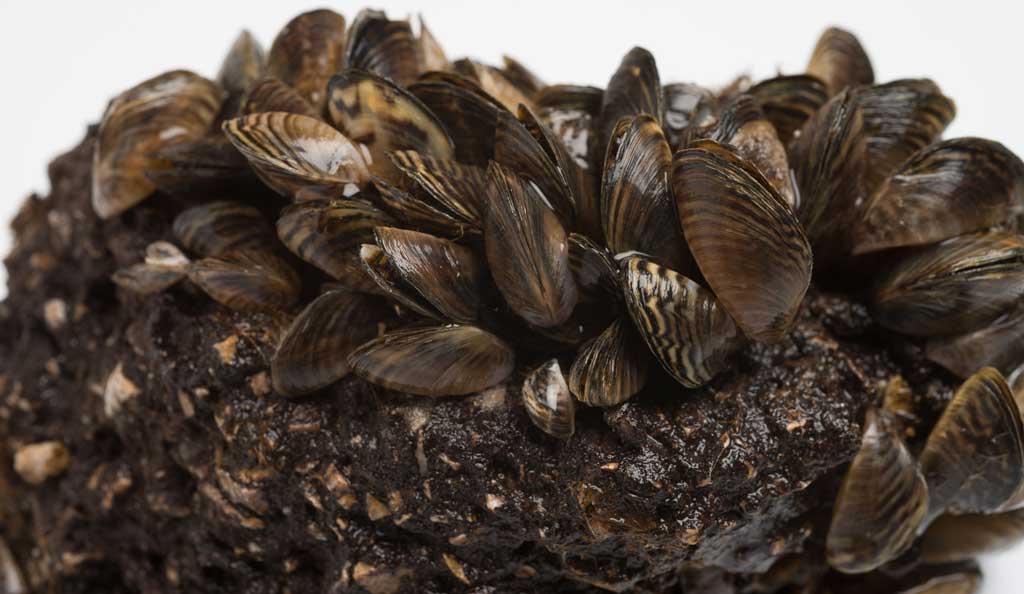
“Many invasive species are introduced into a new region accidentally. Zebra mussels are native to the Black Sea and the Caspian Sea in Central Asia. Zebra mussels arrived in the Great Lakes of North America accidentally, stuck to large ships that traveled between the two regions. There are now so many zebra mussels in the Great Lakes that they have threatened native species.”
National Geographic
In addition, small zebra mussels clog the cooling systems in boat engines, while larger ones have damaged water pipes at power plants throughout the Great Lakes. This isn’t the only invasive species that causes property damage.
Insects can get into wood, shipping palettes, and crates that are shipped around the world.
- Borwn marmorated stink bugs feed on crops and ornamental plants. They stowed away, probably in shipping containers, coming to North American at some point in the 1990s.
- Spotted wing drosophila, rather than feeding on overripe fruit like most flies, targets and damages unripe or barely ripe fruit, making it extra destructive. They likely hitched a ride on fruit imported to Hawaii from their native Asia in the 1980s and into the continental US in 2008.
- The khapra beetle attacks stored grain and can cause it to lose 70 percent of its weight or value. The Invasive Species Specialist Group ranks it among the 100 worst invasive species of all time.
- The spotted lanterfly hitched a ride to Pennsylvania in 2014, most likely by attaching its eggs to something imported from southern China or Vietnam. It is not quite invasive yet, but it looks inevitable that it will be soon.
Beware climate change
In addition, higher average temperatures and changes in rain and snow patterns caused by climate change will enable some invasive plant species—such as garlic mustard, kudzu, and purple loosestrife—to move into new areas. Insect pest infestations will be more severe as pests such as mountain pine beetle are able to take advantage of drought-weakened plants.
Note: Not all non-native species are invasive. For example, most of the food crops grown in the United States, including popular varieties of wheat, tomatoes, and rice, are not native to the region. Personally, I’m delighted by the availability of hellebores.
In conclusion: Only a small percent of introduced species become invasive. However, it is nearly impossible—even for scientists—to predict which species will become invasive. Some species are present for many years before they exhibit invasive characteristics. And new species are being introduced every day.
Bottom Line: Invasive species are among the leading threats to native wildlife. Approximately 42 percent of threatened or endangered species are at risk due to invasive species. Be aware!
